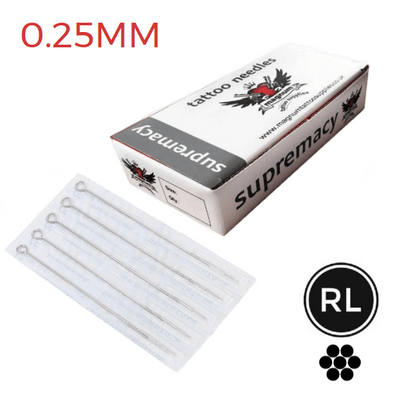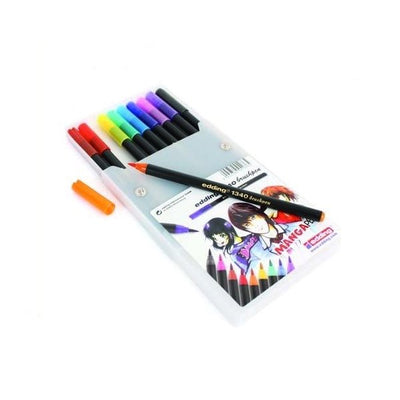Over time, many tattoo enthusiasts face common issues with their tattoos. Colours that once stood out begin to fade, lines blur, and details lose their sharpness. Factors like ageing skin, sun exposure, and life changes such as weight fluctuations can affect your tattoo’s appearance.
These problems can make your tattoo look less appealing and affect your satisfaction with it. Understanding when and why you might need a tattoo touch-up is important to keep your tattoo looking fresh and vibrant.
Indicators that you need tattoo touch-ups

1. Fading colours
If your tattoo has lost its vibrancy and the colours appear dull or washed out, it's a clear sign that it might need a touch-up. Over time, exposure to elements like sunlight can cause the ink to fade, diminishing the overall look of your tattoo.
2. Blurred lines
When the lines of your body art start to lose their sharpness and become blurred, it indicates that the tattoo might need a touch-up. This blurring can occur due to ageing skin, weight fluctuations, or the natural stretching and contracting of the skin.
3. Uneven healing
During the initial healing process, if your tattoo experienced significant scabbing, peeling, or even infection, it might have healed unevenly. This can result in patchy areas where the ink did not settle properly, necessitating a touch-up to even out the appearance.
4. Patchy colouration
If you notice areas in your tattoo where the colour looks uneven, or there are variations in boldness, it's a sign that the tattoo might need a touch-up. This patchiness can be due to improper healing or the natural fading process.
5. Reduced definition
Over time, the fine details in your tattoo may become less defined. If the intricate parts of your tattoo no longer stand out as they once did, a touch-up can help restore the original detail and sharpness.
6. Changes in skin texture
Significant changes in your skin texture, such as those caused by weight gain, weight loss, or pregnancy, can distort the appearance of your tattoo. If your tattoo looks stretched or misshapen, a touch-up might be necessary to correct these changes.
7. Initial artist’s work
If the original tattoo did not meet your expectations due to the artist's error or if you were not completely satisfied with the outcome, a touch-up can address these issues. This is especially relevant if there were mistakes or if the ink application was inconsistent.
8. Personal satisfaction
Finally, if you simply feel less satisfied with the appearance of your tattoo over time, this can be a strong indicator that a touch-up is needed. Ensuring that your tattoo continues to reflect your personal style and identity is important, and a touch-up can help maintain that satisfaction.
When to consider a touch-up

Consider a tattoo touch-up every 3-5 years to maintain its vibrancy and clarity, as regular exposure to sunlight and natural skin ageing can cause fading and blurring.
Additionally, if you notice significant fading or blurred lines or if your tattoo has been affected by significant weight changes or pregnancy, it's a good idea to schedule a touch-up.
Always wait until the tattoo has fully healed, typically 4 weeks to 6 months after the initial inking, before considering any touch-ups.
To help prolong the time between touch-ups, try using our aftercare products like sunscreen, lotion, or balm. These can protect your tattoo from sun damage and keep your skin healthy, ensuring your tattoo remains vibrant for longer.
Benefits of tattoo touch-ups

- Restores vibrancy: Brings back the original bright and bold colours of the tattoo.
- Sharpens lines: Enhances the clarity and definition of the tattoo’s lines and details.
- Corrects imperfections: Fixes any uneven areas or flaws that occurred during the initial healing process.
- Prolonged tattoo longevity: Helps maintain the quality and appearance of the tattoo over time.
- Adapts to body changes: Addresses any distortions or changes in the tattoo due to weight fluctuations or ageing.
- Enhances overall appearance: Improves the overall aesthetic and ensures the tattoo looks its best.
- Increases personal satisfaction: Ensures that you remain happy with your tattoo’s appearance and alignment with your style.
- Integrates new designs: Allows for seamless incorporation of new elements or cover-ups.
Choosing a tattoo artist for touch-ups
Pros and cons of returning to the original artist
Returning to the original artist for a touch-up has several advantages. The original artist is already familiar with your tattoo and the techniques used, ensuring consistency in style and execution. They understand your original vision and can make adjustments while maintaining the integrity of the initial work.
However, if you were not completely satisfied with the original work or had a less-than-ideal experience, you might hesitate to return. Additionally, if the original artist is no longer available or has significantly increased their rates, it may not be practical to go back to them.
Considerations for choosing a new artist
Choosing a new artist for a touch-up requires careful consideration. Look for an artist with a strong portfolio that includes examples of successful touch-ups, ensuring their style aligns with your preferences. Read reviews and seek recommendations to find a reputable artist known for quality touch-up work.
It’s important to have a detailed consultation with the new artist to discuss your expectations and ensure they understand your needs. Comfort and trust are crucial, so choose an artist who communicates well and makes you feel confident in their abilities.
Final thoughts
Tattoo touch-ups are important for keeping your tattoo looking great over time. Getting a touch-up every few years can help keep your tattoo looking fresh and sharp. Touch-ups fix faded colours, blurry lines, and other issues, making sure your tattoo art always looks its best.
Whether you go back to your original artist or find a new one, recognizing when your old tattoo needs a touch-up will help keep it beautiful for many years.



























































 Studio supplies
Studio supplies












 Power & batteries
Power & batteries








 Aftercare
Aftercare





















 Apprentice
Apprentice


 Piercing & jewellery
Piercing & jewellery







 PMU supplies
PMU supplies




 New arrivals
New arrivals
 Gift vouchers
Gift vouchers
 Shop all
Shop all















































